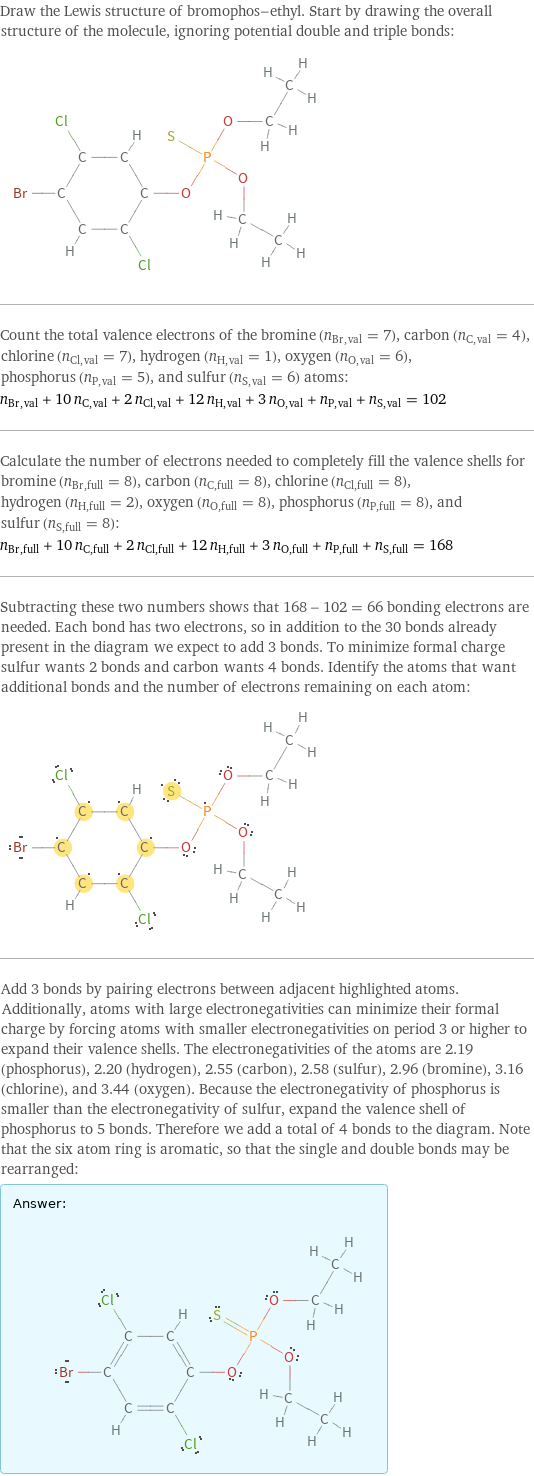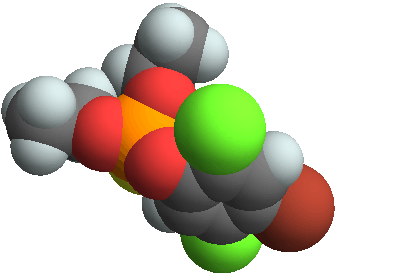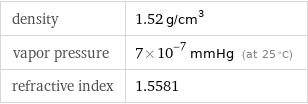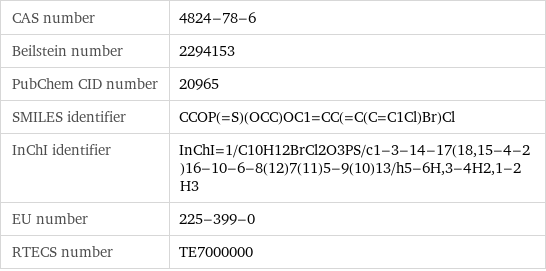Input interpretation

bromophos-ethyl
Chemical names and formulas

formula | C_10H_12BrCl_2O_3PS name | bromophos-ethyl IUPAC name | (4-bromo-2, 5-dichloro-phenoxy)-diethoxy-sulfanylidene-phosphorane alternate names | bromofos-ethyl | ethyl bromophos | filariol | nexagan mass fractions | Br (bromine) 20.3% | C (carbon) 30.5% | Cl (chlorine) 18% | H (hydrogen) 3.07% | O (oxygen) 12.2% | P (phosphorus) 7.86% | S (sulfur) 8.14%
Lewis structure

Draw the Lewis structure of bromophos-ethyl. Start by drawing the overall structure of the molecule, ignoring potential double and triple bonds: Count the total valence electrons of the bromine (n_Br, val = 7), carbon (n_C, val = 4), chlorine (n_Cl, val = 7), hydrogen (n_H, val = 1), oxygen (n_O, val = 6), phosphorus (n_P, val = 5), and sulfur (n_S, val = 6) atoms: n_Br, val + 10 n_C, val + 2 n_Cl, val + 12 n_H, val + 3 n_O, val + n_P, val + n_S, val = 102 Calculate the number of electrons needed to completely fill the valence shells for bromine (n_Br, full = 8), carbon (n_C, full = 8), chlorine (n_Cl, full = 8), hydrogen (n_H, full = 2), oxygen (n_O, full = 8), phosphorus (n_P, full = 8), and sulfur (n_S, full = 8): n_Br, full + 10 n_C, full + 2 n_Cl, full + 12 n_H, full + 3 n_O, full + n_P, full + n_S, full = 168 Subtracting these two numbers shows that 168 - 102 = 66 bonding electrons are needed. Each bond has two electrons, so in addition to the 30 bonds already present in the diagram we expect to add 3 bonds. To minimize formal charge sulfur wants 2 bonds and carbon wants 4 bonds. Identify the atoms that want additional bonds and the number of electrons remaining on each atom: Add 3 bonds by pairing electrons between adjacent highlighted atoms. Additionally, atoms with large electronegativities can minimize their formal charge by forcing atoms with smaller electronegativities on period 3 or higher to expand their valence shells. The electronegativities of the atoms are 2.19 (phosphorus), 2.20 (hydrogen), 2.55 (carbon), 2.58 (sulfur), 2.96 (bromine), 3.16 (chlorine), and 3.44 (oxygen). Because the electronegativity of phosphorus is smaller than the electronegativity of sulfur, expand the valence shell of phosphorus to 5 bonds. Therefore we add a total of 4 bonds to the diagram. Note that the six atom ring is aromatic, so that the single and double bonds may be rearranged: Answer: | |
3D structure

3D structure
Basic properties

molar mass | 394 g/mol phase | liquid (at STP) boiling point | 389 °C density | 1.52 g/cm^3
Units

Liquid properties (at STP)

density | 1.52 g/cm^3 vapor pressure | 7×10^-7 mmHg (at 25 °C) refractive index | 1.5581
Units

Thermodynamic properties

molar heat of vaporization | 61.3 kJ/mol specific heat of vaporization | 0.1556 kJ/g (at STP)
Chemical identifiers

CAS number | 4824-78-6 Beilstein number | 2294153 PubChem CID number | 20965 SMILES identifier | CCOP(=S)(OCC)OC1=CC(=C(C=C1Cl)Br)Cl InChI identifier | InChI=1/C10H12BrCl2O3PS/c1-3-14-17(18, 15-4-2)16-10-6-8(12)7(11)5-9(10)13/h5-6H, 3-4H2, 1-2H3 EU number | 225-399-0 RTECS number | TE7000000
Safety properties

flash point | 189 °C

DOT hazard class | 6.1 DOT numbers | 3018
Toxicity properties

RTECS classes | agricultural chemical and pesticide